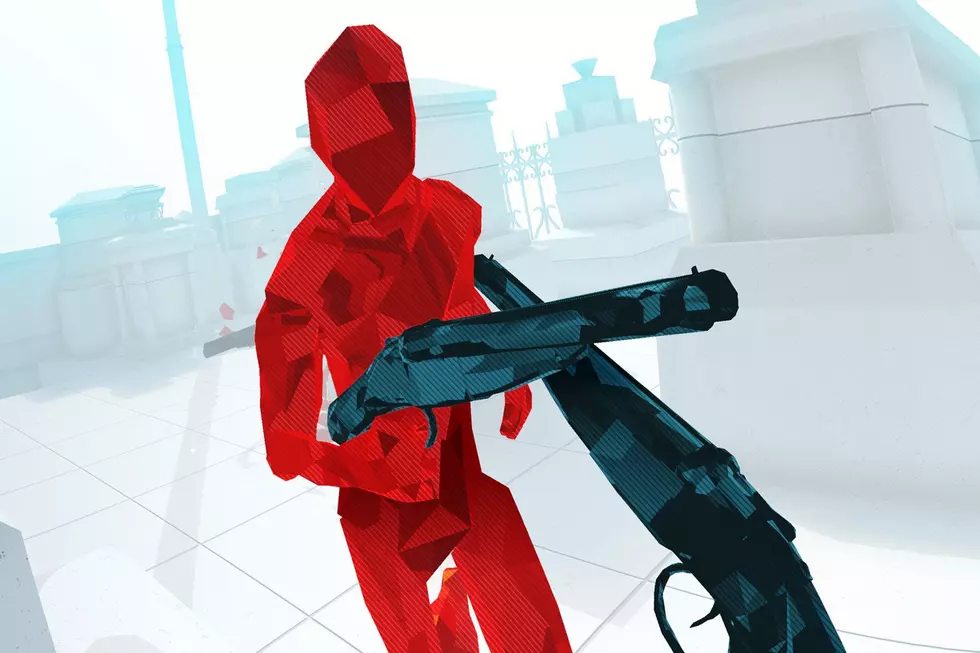
Life is Strange, Episode One – Chrysalis Review (PlayStation 4)
Every day of our lives, we're faced with dozens of choices about things as mundane as what to eat or wear, to more complex ideas like lying about your plans for the weekend or staying silent while a friend or co-worker is berated. Sometimes, the decisions we make work out in our favor. Other times, however, we may end up regretting our choices, or worse yet, hurting those close to us. But what if there was a way to ensure you always got the best outcome possible for not just your life, but those around you?
Life is Strange explores what it's like to be a teenage girl on the brink of escaping the clutches of high school, but with the added twist of being able to rewind time to have complete control over the past and the future. If it's a conceit that sounds a little bit familiar, that's because Life is Strange was developed by Dontnod, the same team that worked on Remember Me. Though Remember Me took place in a far away future, the idea of being able to rewrite history to your benefit remains a central focus in the modern-day setting of Life is Strange. Here though, it's handled slightly differently.
Max Caulfield (whose name is a little on the nose in a game with more than its fair share of on-the-nose moments) has returned to her hometown of Arcadia Bay to attend one of the most exclusive private schools in the country for her senior year. A few weeks into the semester, Max finds herself in the bathroom observing a butterfly landing on the janitor's cart. However, her brief moment of symbolism is ruined by a violent interaction between a boy and a girl arguing over money and drugs. Suddenly, a gun goes off, and Max's inert ability to control time is awakened. Max is snapped back to the moments before she ever entered the bathroom, though with the knowledge that if she doesn't act fast, that mysterious girl will get shot in the coming moments.
Hurriedly, Max makes her way to the lavatory, where she reenacts her previous movements precisely, right down to forgetting to act in time to save the girl. This time however, we're given control over Max's ability, and rewind time to just before the gun goes off. We're expected to alter the future without interfering directly. Now, a fire alarm that was once merely set dressing becomes an object with which we can interact. All we need is the hammer to break the glass. Perhaps it's under the janitor's cart? As we check, the gun goes off again, however, now we have a hammer in our possession, and we can take it back in time with us. Rewinding once more, Max is able to smash the glass and pull the alarm before the struggle on the other side of the room reaches its final destination, and the fate of both the boy and the girl are forever changed in that instant.
This is the driving force behind Life is Strange's gameplay, and in this first episode, the puzzle elements never really escalate beyond this first puzzle's complexity. There might be a few more steps here and there, but for the most part, Max's powers are used sparingly. That's not necessarily a bad thing, as this episodic adventure still has plenty of ground to tread, and plenty of room for more challenge. Max can rewind conversations and other brief interactions as well, which serves to build relationships with other students at the school. Unlike similar choice-based adventure games, the decisions you make here are only final when you want them to be. You can still play with your base instincts should you choose to, but you'll always have an opportunity to alter your interactions if you don't like the immediate outcome.
Rewinding time does have its limitations, however. You can't rewind past more than a few minutes of time, or beyond one of the game's many checkpoints. Once you advance to the next scenario or segment of a longer set piece, your decisions will be set in stone. It's an interesting way to try and live Max's life, as you're never quite sure if the answer you gave or the fight you broke up is going to benefit you in the long run. The choices don't all have an immediate impact, and a few clearly have implications that will rise up in future episodes.
Though we do scratch just the surface of the time manipulation abilities Max possesses in the first episode, there's more to Life is Strange than a few choices and puzzles. Since this is the opening act of a larger tale in a world we've never seen before, there are seemingly endless amounts of details to pick out wherever Max goes. Her journal is rife with detail about her life and the people she's encountered. It's instantly filled with new information the moment she interacts with anyone, and worth checking frequently to learn more of Max's insight. Likewise, the world itself has an almost limitless amount of characters to observe, notes to read and secrets to behold. How deep you fall down the rabbit hole of inspecting each and every little thing is up to you, but the more time you spend learning about Max's world, the more you'll be rewarded with the depth and complexity of Dontnod's little universe.
In fact, there's so much to observe, you might accidentally think something relatively important is just background noise. It wasn't until completing the first chapter that we saw just how much we missed. Nearly everything, key to the main story or not, has a statistic revealing how many people made each choice, as well as how many people interacted with certain spots or characters in the game world. It was quite shocking to see that there was so much minutia. Then again, how often in our own lives do we merely focus on what's in front of us, while we miss the little things in our periphery?
It's a shame though, as the little moments and details help fill in the gaps of an otherwise by-the-books plot. They mystery that we'll see unfold during the remainder of Life is Strange's main story arc could be interesting, but it's also something we've seen ad nauseum in television and movies before. The key differences this time around are the setting and the protagonist, which are nice touches, but with just one episode in the can, Dontnod hasn't done much to set Life is Strange apart from similar tales. It doesn't help that much of the dialogue is immediately dated, with references seemingly to appear hip rather than actually youthful. The ADR is also not a help, as dialogue at points in no way matches with the characters' lips.
Dontnod's latest does have some bright spots, though. The presentation is absolutely wonderful. The painterly style (as well as the color palette) works well for creating Max's world, and the lighting gives every moment a dream-like quality. The soundtrack selection is also on point, with a score and licensed tracks that immediately give you an impression of Arcadia Bay that you can almost believe is real. Additionally, despite the sometimes awkward writing, the voice acting is well done.
Life is Strange appears to have a lot to offer, but just one episode in we barely get a taste. The episode serves as a nice introduction to Max's world and powers, but it also feels very introductory. Few narrative risks were taken to entice players into wanting or needing to know what comes next, which is a bit of a shame. There's definitely something here, we just haven't been able to see Life is Strange's full potential yet.
This review was completed with a download code for Life is Strange, Episode One provided by the publisher for PlayStation 4.
More From Arcade Sushi










